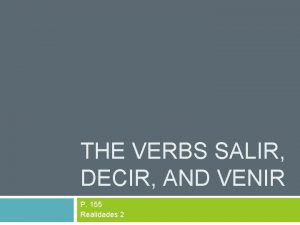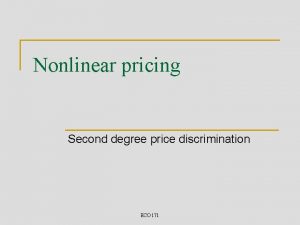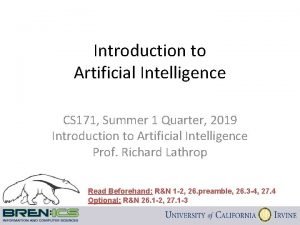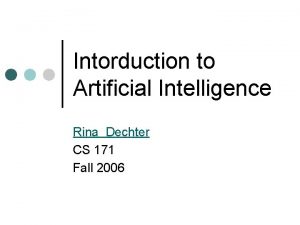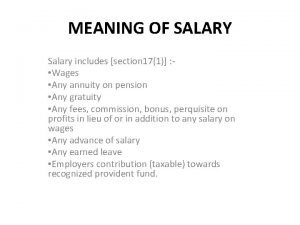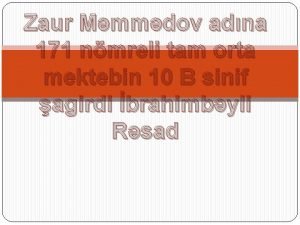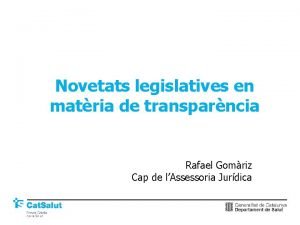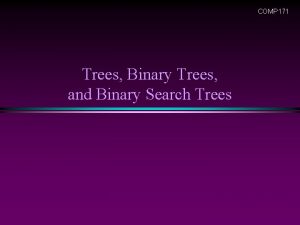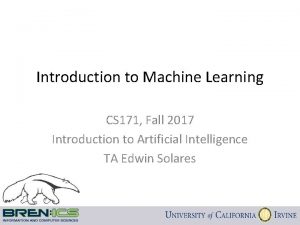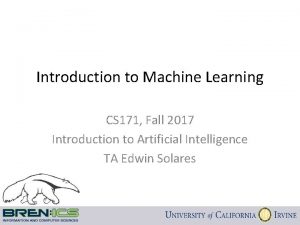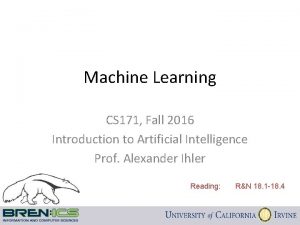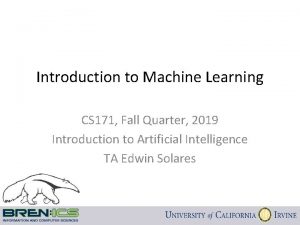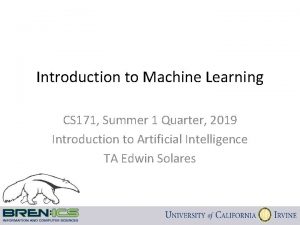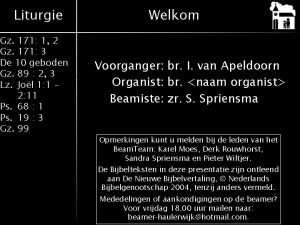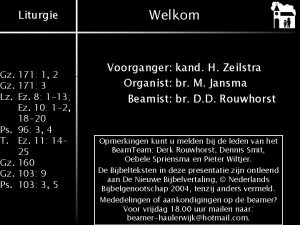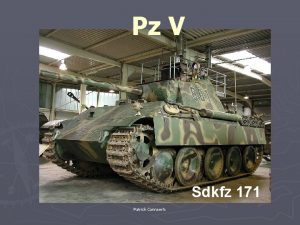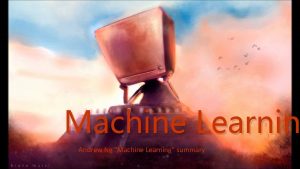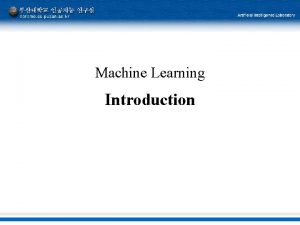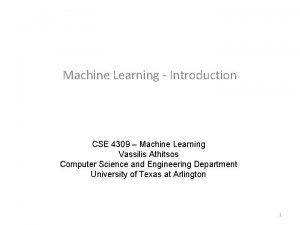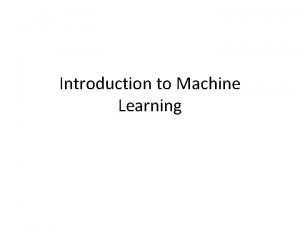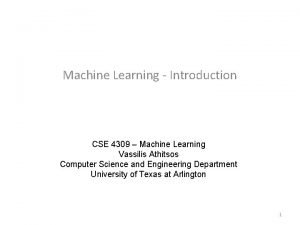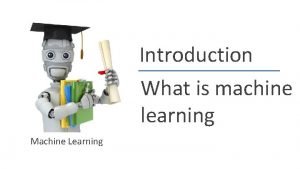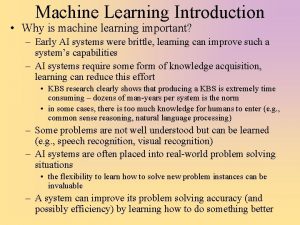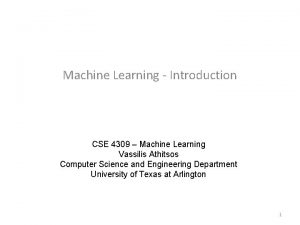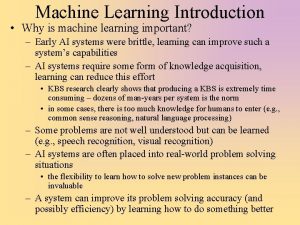Introduction to Machine Learning CS 171 Fall 2017


























- Slides: 26

Introduction to Machine Learning CS 171, Fall 2017 Introduction to Artificial Intelligence TA Edwin Solares

Automated Learning • Why learn? – Key to intelligence – Take real data get feedback improve performance reiterate – USC Autonomous Flying Vehicle Project • Types of learning – Supervised learning: learn mapping: attributes “target” – Classification: learn discreet target variable (e. g. , spam email) – Regression: learn real valued target variable (e. g. , stock market) – Unsupervised learning: no target variable; “understand” hidden data structure – Clustering: grouping data into K groups (e. g. K-means) – Latent space embedding: learn simple representation of the data (e. g. PCA, SVD) – Other types of learning • Reinforcement learning: e. g. , game-playing agent • Learning to rank, e. g. , document ranking in Web search • And many others….

Minimization of Cost Function Gradient Decent Courtesy of Nvidia Website

Minimization of Cost Function Gradient Decent Local Minima Global Minima Entertaining and informative way to learn about Neural Nets and Deep Learning https: //www. youtube. com/watch? v=p 69 khggr 1 Jo

Supervised Learning Terminology • Attributes – Also known as features, variables, independent variables, covariates • Target Variable – Also known as goal predicate, dependent variable, f(x), y … • Classification – Also known as discrimination, supervised classification, … • Error function – Objective function, loss function, …

Supervised learning

Inductive Learning as Optimization or Search • Empirical error function: E(h) = • x distance[h(x, ) , f(x)] Empirical learning = finding h(x), or h(x, ) that minimizes E(h) – In simple problems there may be a closed form solution • E. g. , “normal equations” when h is a linear function of x, E = squared error – If E(h) is differentiable continuous optimization problem using gradient descent, etc • E. g. , multi-layer neural networks – If E(h) is non-differentiable (e. g. , classification systematic search problem through the space of functions h • E. g. , decision tree classifiers • Once we decide on what the functional form of h is, and what the error function E is, then machine learning typically reduces to a large search or optimization problem • Additional aspect: we really want to learn a function h that will generalize well to new data, not just memorize training data – will return to this later

Decision Tree Representations •

Decision Tree Representations

Pseudocode for Decision tree learning

Decision Tree: Book Example

Choosing an attribute • Idea: a good attribute splits the examples into subsets that are (ideally) "all positive" or "all negative" • Patrons? is a better choice – How can we quantify this? – One approach would be to use the classification error E directly (greedily) • Empirically it is found that this works poorly – Much better is to use information gain (next slides)

Entropy and Information • “Entropy” is a measure of randomness • In chemistry: https: //www. youtube. com/watch? v=Zs. Y 4 Wc. QOrfk

Entropy with only 2 outcomes In binary case (2 outcomes) Order as a function of p High DIsorder 1 High Order 0 0. 5 1 For multiple outcomes we have

Information Gain • H(p) = entropy of class distribution at a particular node • H(p | A) = conditional entropy • Weighted average entropy of conditional class distribution • Partitioned the data according to the values in A • The sum of each partition given the group/class • Gain(A) = H(p) – H(p | A) • Simple rule in decision tree learning – At each internal node, split on the node with the largest information gain (or equivalently, with smallest H(p|A)) • Note that by definition, conditional entropy can’t be greater than the entropy

Entropy Example 10 Squares 11 Circles 1 Square 9 Circles 9 Square 2 Circles Weighted average -

Formulas

Root Node Example For the training set, 6 positives, 6 negatives, H(6/12, 6/12) = 1 bit positive (p) negative (1 -p) Consider the attributes Patrons and Type: Conclude: Patrons has the highest IG of all attributes and so is chosen by the learning algorithm as the root Information gain is then repeatedly applied at internal nodes until all leaves contain only examples from one class or the other

Decision Tree Learned Authors Created Learned

Assessing Performance: Training and Validation Data Full Data Set Training Data Validation Data Idea: train each model on the “training data” and then test each model’s accuracy on the validation data Training data performance is typically optimistic • e. g. , error rate on training data With large data sets we can partition our data into 2 subsets, train and test • build a model on the training data • assess performance on the test data

How Overfitting affects Prediction Complex Models Underfitting Overfitting Predictive Error on Test Data Error on Training Data Model Complexity Ideal Range for Model Complexity Simple Models

The k-fold Cross-Validation Method • Why stop at a 90/10 “split” of the data? – In principle we could do this multiple times • “k-fold Cross-Validation” (e. g. , k=10) – randomly partition our full data set into k disjoint subsets (each roughly of size n/k, n = total number of training data points) • for i = 1: k (where k = 10) – train on 90% of the ith data subset – Accuracy[i] = accuracy on 10% of the ith data subset • end • Cross-Validation-Accuracy = 1/k i Accuracy[i] – choose the method with the highest cross-validation accuracy – common values for k are 5 and 10 – Can also do “leave-one-out” where k = n

Disjoint Validation Data Sets for k = 5 Validation Data (aka Test Data) Full Data Set 1 st partition Training Data

Disjoint Validation Data Sets for k = 5 Validation Data (aka Test Data) Full Data Set 1 st partition 2 nd partition Training Data

Disjoint Validation Data Sets for k = 5 Validation Data (aka Test Data) Full Data Set Validation Data 1 st partition 2 nd partition Training Data 3 rd partition 4 th partition 5 th partition

You will be expected to know Understand Attributes, Error function, Classification, Regression, Hypothesis (Predictor function) What is Supervised and Unsupervised Learning? Decision Tree Algorithm Entropy Information Gain Tradeoff between train and test with model complexity Cross validation
 Pg 171
Pg 171 Lei 171 de 2007
Lei 171 de 2007 Forms of decir
Forms of decir 171
171 Ai 171
Ai 171 Ai 171
Ai 171 Tax allowance meaning
Tax allowance meaning Informasiya prosesleri
Informasiya prosesleri 171 nomreli mekteb
171 nomreli mekteb Decret 171/2015
Decret 171/2015 Hazmat table
Hazmat table Cs 171 uci
Cs 171 uci 171 in binary
171 in binary 171 sayli mekteb
171 sayli mekteb 171 nomreli mekteb
171 nomreli mekteb 2017 dvhimss annual fall conference
2017 dvhimss annual fall conference Concept learning task in machine learning
Concept learning task in machine learning Analytical learning in machine learning
Analytical learning in machine learning Pac learning model in machine learning
Pac learning model in machine learning Pac learning model in machine learning
Pac learning model in machine learning Inductive vs analytical learning
Inductive vs analytical learning Deductive learning vs inductive learning
Deductive learning vs inductive learning Instance based learning in machine learning
Instance based learning in machine learning Inductive learning machine learning
Inductive learning machine learning First order rule learning in machine learning
First order rule learning in machine learning Eager learning algorithm
Eager learning algorithm Deep learning vs machine learning
Deep learning vs machine learning


